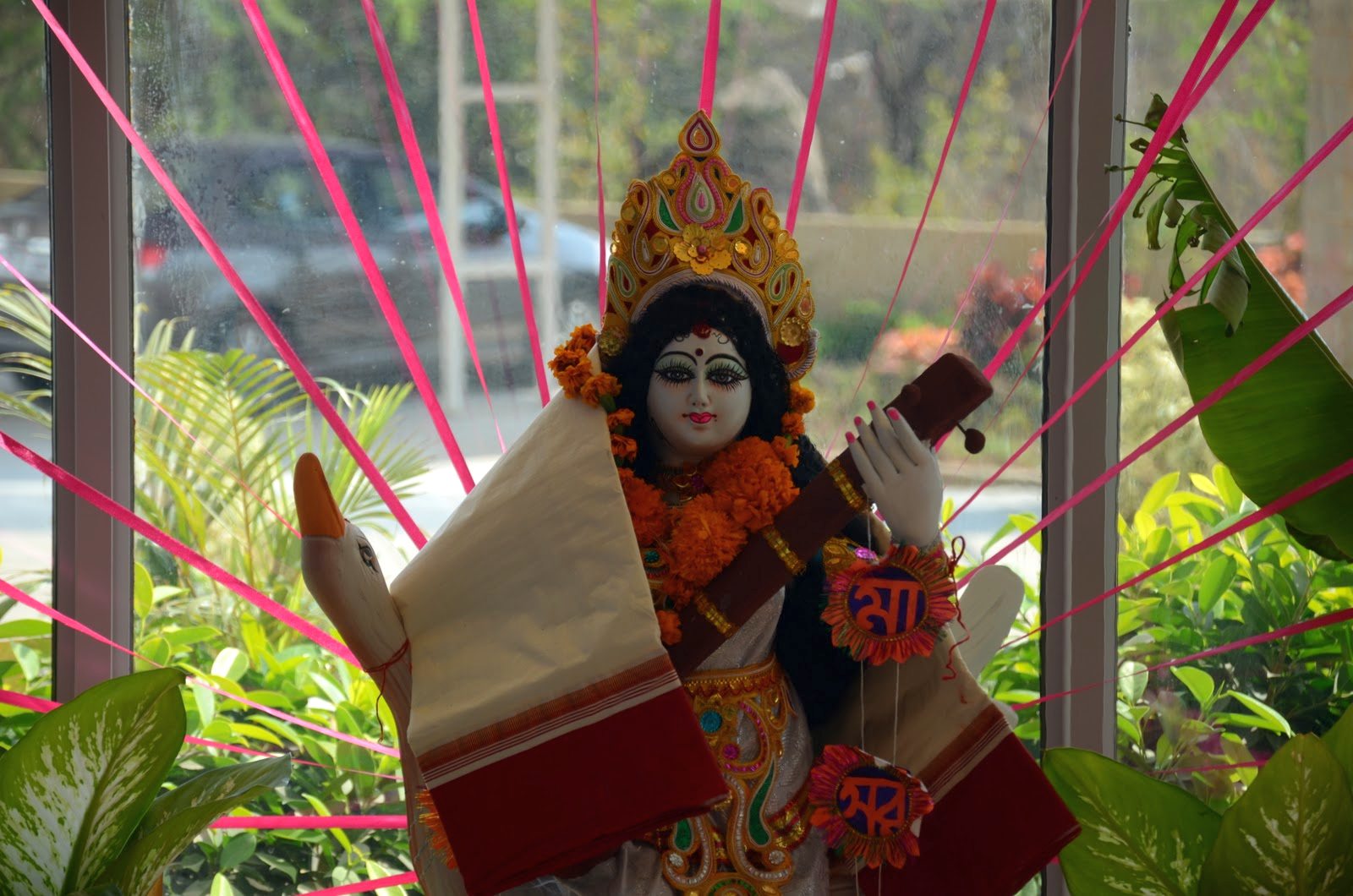Its February time and with board exams round the corner in March and April, every mother would think of celebrating saraswathi puja at their homes, so that her children’s can invoke the blessings of the goddess.
This puja is celebrated in the month of phalgun month (January to February), and is celebrated popularly in the eastern region and is mostly celebrated by the youth in colleges, schools etc.
Moreover, this festival is observed during different times in different parts of India.
In south India, this puja is celebrated during Navratri, which is also called the Mahanavami day, also observed as Ayudha puja and Saraswati puja.
Keep these things in mind during puja celebration:
The essential puja samagri used during this puja are
- Image or idol of Goddess Saraswati
- A white cloth (vastram)
- Flowers – louts, lilies or jasmine.
- Mango leaves or other decorations
- Turmeric
- Kumkum
- Rice
- Bananas
- Locally available Fruits
The pooja ritual begins with the chanting of the saraswati vandana mantra. According to Vedic culture there is shloka on Lord saraswati
Sarasvati namastubhyam
Varade KAmarUpiNi
VidyArambham Karishyami
Siddhir Bhavatu Me SadA
The English translation of this is:
“O Goddess Saraswathi; salutations to you, the giver of boons, the one who fulfills desires. I shall begin my studies. May there always be accomplishment for me.”
- Since this puja is celebrated on the onset of vasanth panchami,all the deities inside the room including the main idol of goddess Saraswati is draped in yellow dyed sari made from the natural dye of “shiuli” flowers.
- Beautiful floral and rangoli designs are made on the place where the idol will be seated and decorated with beautiful flowers. Designs of fish are considered to be auspicious.
- The idol is then placed facing the east, on a flat stool covered with a yellow cloth.
- A green coconut is placed on an earthen pot and covered with a red checked cloth called “gamocha”.
- The worship of Maa Saraswati is incomplete without Palash flowers, plums, phaag and abhro (herbal powdered colors), bel leaves and white sandalwood paste.
- On the day of saraswati puja all items related to studies, books, computer and music instruments are kept near the idol of goddess saraswati to seek her blessings.Moreover, these books are used for studies after the next day of the puja. In this auspicious occasion small children’s are asked to touch pen and write alphabets or letters as it sets the beginning of a new learning phase in their life. In Bengali, this ritual is known as “Hatey-Khori”. Sometimes the ritual is also held the very next day of the puja, as it is considered to be one of the most auspicious day.
- Plum and tapioca fruits are offered to the goddess and among the sweets puffed rice, jaggery and yogurt are also offered to the Ma Saraswati.
- A havan is conducted by the priest using special wood, ghee, incense sticks, and a diya or lamp is lit beside the prasad.
- On this auspicious day, no animal sacrifice is done as goddess Saraswati is considered pious and full of serenity. Thus, vegetarian food is prepared on this day.
- Most popular Bengali dish made on this day is “Kooler Chatni” – (Plum- Jam) is especially made and served on this day.
- After the completion of this puja, fruits, and other traditional sweets are given to everyone in the neighborhood. Then, the idol is immersed in the nearby sea or is permanently installed in their home and celebrated with great pomp and show next year.
- Moreover, the stationary items, book, and other academic materials are kept in the respective places after the very next day of the puja.
- Therefore, Celebrate right and invoke the blessings of Lord Saraswati this year 2024!
Related post: amavasya and purnima days

